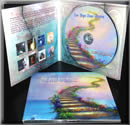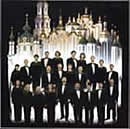Two Steps From Heaven

Classical Crossover

Sacred Choral Music
by Kiev Chamber Choir

Video:
Ukrainian Folk Music
Free Dog Clipart

Classical Crossover

Sacred Choral Music
by Kiev Chamber Choir

Video:
Ukrainian Folk Music
Free Dog Clipart
Russian Orthodox Church Sacred Choral Music on Amazon
ALL ABOUT
AVE MARIA LYRICS
Celine Dion: What Does She Sing?
MOBILE WEBSITE
 DOWNLOAD THIS SONG FOR FREE You won't find this song anywhere on the Internet. CHAPTER 4 : How to record in your home studio Acoustic Guitar Electric Guitar Bass Guitar Piano Brass & Reed Instruments Vocals Drum Kit Bass Guitar When you’re recording an electric bass guitar, blending a direct injection (DI) line recording with a mic’d cabinet is the safest way to make sure you’re going to get the tone you’re looking for. Somewhere in the blend of those tracks, you’ll find the tone you need for each song. The style of music can certainly dictate the kinds of mics you’re going to choose and how far the mic’s going to be away from the cabinet. But, it’s always safe to have the DI. There’s more unaltered information coming from the DI, and you’re getting the fastest transients you can imagine. I tend to concentrate on the attack of the bass sound with the DI, and the roundness and the body of the bass I pull out of the microphone. The mic’d amp can give you a lot of that middle and low end tone that you’re not going to get out of a DI. Just like guitar, the majority of the mics used on a bass or guitar cabinet are dynamic mics. There are some situations where you might put a condenser mic on a bass cabinet — the Beatles, for instance, often used a Telefunken U47 condenser on the cabinet. But more common will be something like the AKG D12, which features a larger diaphragm designed to pick up bass frequencies. For a punchier tone get closer to the amp with your micyou might go with a mic six inches off the cone. If you’re trying to get that low frequency of the bass, you might want to pull that mic back a few feet. In order to hear a low E on the bass correctly, you need to be about 30 feet away. VOCAL TUNING AND PITCH CORRECTION All singers know that usually vocal studio recording has pitch issues. However, vocal pitch correction will help fix flat or sharp notes and clean up your vocals. Click here if you feel you have some problems with your vocal tracks |
HOW TO MAKE HOME
|
DOWNLOAD THIS SONG FOR FREE
You won't find this song anywhere on the Internet.
HOW TO MAKE HOME RECORDING STUDIO